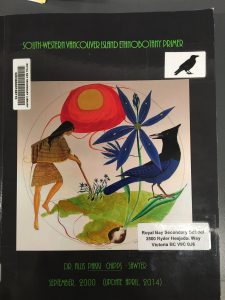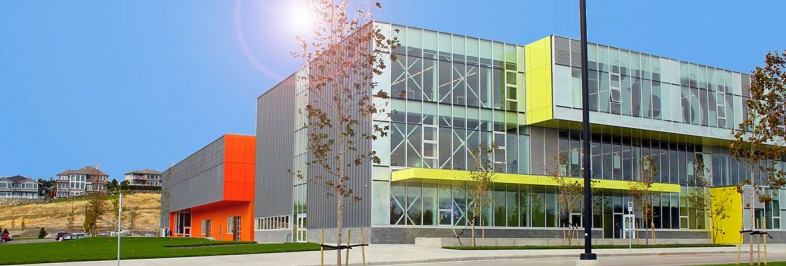This video was created by Brody and Lauren. Their inquiry question was “Why do people raise their own chickens?”. This is their answer to that question.
Can you plant seeds in the fall? And if so, what ones will do well on the west coast?
This video was created by Brody and Lauren. Their inquiry question was “Why do people raise their own chickens?”. This is their answer to that question.
Can you plant seeds in the fall? And if so, what ones will do well on the west coast?
Tech Tools for the Synergy Project
As we embarked on our journey of film making, we turned to Youtube to learn from others.
In many cases students chose to capture film using their own devices. To support this we went over some key points:
Further, we discussed the importance of holding your phone horizontally. Here is a funny little video to hit this point home (I think Robin and I found this to be more funny than the students).
Students did experiment and capture footage with the Go-Pros (in fact, the Hero 5 Sessions captured some great footage of chickens in the chicken coop) Again, for Robin and I, Youtube saved the day!
How to use the GoPro Hero 5 Session:
How to use the GoPro Hero 5 Black:
How to use iMovie:
We watched the videos to learn how to use the tech, then we supported students with our new found knowledge. We did post the videos to the Google Classroom for a resource for the students, but did not show these in the classroom.
Luckily, our Yearbook class allowed us to borrow their Canon Rebel T5i cameras with a microphone jack. This allowed us to capture video, especially when there was wind, that had better sound quality than what we would have got using the Go-Pros. Through this project students had to assess what footage they were hoping to capture and select the technology that best suited their needs.
In terms of adding music to the films, we asked the students to only use music from the audio files included in iMovie to avoid copyright infringement.
Due to our project having a heavy emphasis on acquiring knowledge from community members, our focus for digital literacy is centered around interview etiquette. We worked with our students to compose emails, make cold calls, and schedule times to visit local farms. In the communication, students were expected to have conversations with the people that they would be interviewing regarding filming and taking pictures; woven in this, considerations when interviewing our local Nations’ Elders. We created a contract that students were expected to discuss with the interviewees, and if it was appropriate, we asked both the student and the interviewees to sign it.
Below, you will find a link to the document.
We consulted a book, South-Western Vancouver Island Ethnography Primer by Dr. Allis Pakki Chipps-Sawyer for considerations when interviewing Elders. I have included a summary of the main points in this blog post.
Things to consider as you prepare for going out into the community to acquire knowledge.

References
Chipps-Sawyer, A.P. (April 2014). South-Western Vancouver Island Ethnobotany
Primer.

This gallery contains 8 photos.
These are the overarching big ideas that our students have examined. Each group has formed an inquiry question and have since reached out to community members to gather knowledge regarding their questions. From here, they created mind maps – outlining their ideas and a basic template for their storyboard.


After some pondering on how to manage the transfer of the Macbooks to and from the foods classroom and keep them charged, we came up with the above set up. This has been an useful way to keep the tech together and fully charged so they are ready for each class. Note: we re-purposed an old overhead cart.
I have been reading the book, The Genius Hour Guidebook, to generate ideas as to how we want to structure our synergy project. I came across a creativity rubric. This aligns with the Core Competencies beautifully. Additionally, it provides vocabulary to support our students with articulating their abilities on a continuum of creativity. I feel that the qualities listed in this rubric are the soft skills that I hope every student works to develop as they move through their school and career path.
Check it out:
Krebs, D., & Zvi, G. (2016). The genius hour guidebook: Fostering passion, wonder, and inquiry in the classroom. New York: Routledge.
This is the project outline that has been given to our students:
Foods 12 Synergy Inquiry Student Outline
As well, this is the letter that accompanied the SET-BC media release to better explain the project to parents:
A huge thank you to SET-BC for providing Royal Bay Secondary with the opportunity to participate in the 2018-2019 Place-Based Synergy Project.
With the support of SET-BC, we will be given the opportunity to utilize film making technologies, in a Foods 11/12 class, to provide curricular access and meaningfully include all students in our classroom environment.
Food In Our Backyard
Royal Bay Secondary is in its fourth year, build in the old gravel pit, and overlooking the Esquimalt Lagoon. We have over 1200 students grades 9-12. Our physical location makes this project so exciting as we are on the traditional territory of the Esquimalt Nation, in a booming urban landscape, and on the border of the vast farm lands of Metchosin; the perfect location for looking at food sustainability, local food sources and innovative ways of growing food in urban areas.
Goals: Embrace the journey and the learning by our team and our students throughout the project.
We are most excited about the “ah-ha moments” along the way.

Our Spring Garden



Welcome to SD62 User Blogs. This is your first post. Edit or delete it, then start blogging!